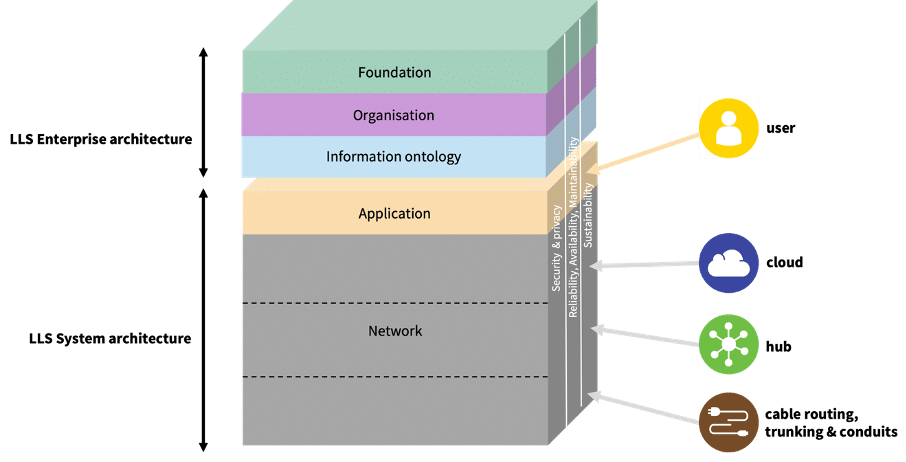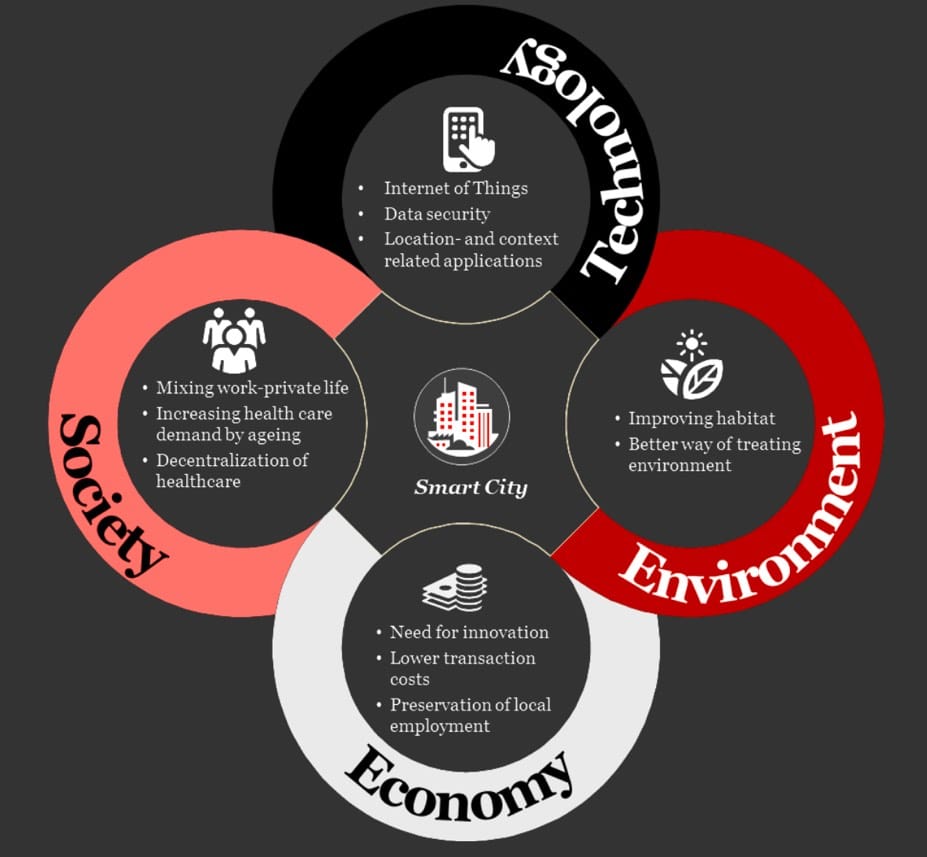Management summary
The Living Lab Scheveningen (LLS) System Specification describes the digital Smart City Infrastructure needed for Smart The Hague and, in particular, for the Living Lab Scheveningen. In line with its Smart City goal, the municipality of The Hague is looking to use technological innovations to address the societal issues that are now helping, and will continue to help, create an attractive environment for residents, companies and visitors to the city.
Adopting an architectural design approach, the LLS System Specification describes the digital Smart City Infrastructure (SCI) in relation to three selected areas: society; the economy; and the environment. The relationship with the surroundings and the applications make the link to Society. On top of this, the wishes of stakeholders and urban developments[1] have had a significant input in the architectural design. The SCI is a complex whole of users, applications, processes, software and hardware. To ensure that these elements are scalable and accessible in the design, a reference architecture was created. This layered model meets the Nederlandse Overheid Referentie Architectuur (NORA, Dutch Government Reference Architecture) criteria and is represented in Figure 1.1 below.

The reference architecture consists of two parts:
- the LLS Enterprise Architecture which gives guidance;
- the LLS System Architecture which revolves around the physical systems for realisation and operation.
The layers in the LLS System Architecture are decoupled in such a way as to allow an open and scalable digital infrastructure to emerge. The layers contain the parts and elements of the SCI. At the heart of this model are the smart Hubs that can communicate with each other and communicate through the cloud. A second cross-section of the model forms the component system (privacy, security, availability …).
Component systems describe the traits of the layers that are mutually connected. All the layers, for example, contribute to the total availability of the system.
The reference architecture is described in a set of leading design rules and a set of concept selections. A ‘concept selection’ is a collective name for reflection, choices, options, scenarios and analyses that are taken to convert project goals into solutions.
System requirements are derived from customer requirements and concept selections, and are incorporated in a Specification. The Specification can be used either to check suppliers’ solutions or as input for tender files.
Introduction
The Living Lab Scheveningen (LLS) System Specification describes the digital Smart City Infrastructure requirements for Smart The Hague and, in particular, for the LLS. In forging the Smart City, the municipality of The Hague will use technological innovations to address societal issues that now, and in the future will, contribute to creating an attractive location for residents, companies and visitors to the city of The Hague. Smart The Hague is a comprehensive programme that incorporates the elements of Society, the Economy, the Environment, and Technology (see Figure 1-1 below) to turn The Hague into a smart city.
The LLS System Specification’s primary focus may be on technology, but the focus is explicitly connected to the other three areas. The use cases make the link with Society. Other important inputs are the stakeholders’ requirements and urban development. The Environment is also clearly seen in the use cases and is a precondition for the architectural system design. The System Specification itself is the input for the cost model.

The LLS System Specification includes a description of the Smart City Infrastructure (SCI), the underlying overlap of the system’s elements and their relationship to the surroundings (chapter 2). The SCI is a complex whole of users, applications, processes, software and hardware. To make this whole scalable and accessible, a set of ‘architecture’ principles are important. These are described in chapter 3 and are the guiding principles for the design. This ultimately led to a number of considerations and concept selections (chapter 4).
The general and specific system requirements (Specification) are described in chapter 6 onwards. The structure of these requirements is explained in chapter 5.
Tell me more.
If you want the complete system specification design document (33 pages) please send an email with your details (including telephone number and organization) to smartthehague@denhaag.nl and we will contact you.
Contact us